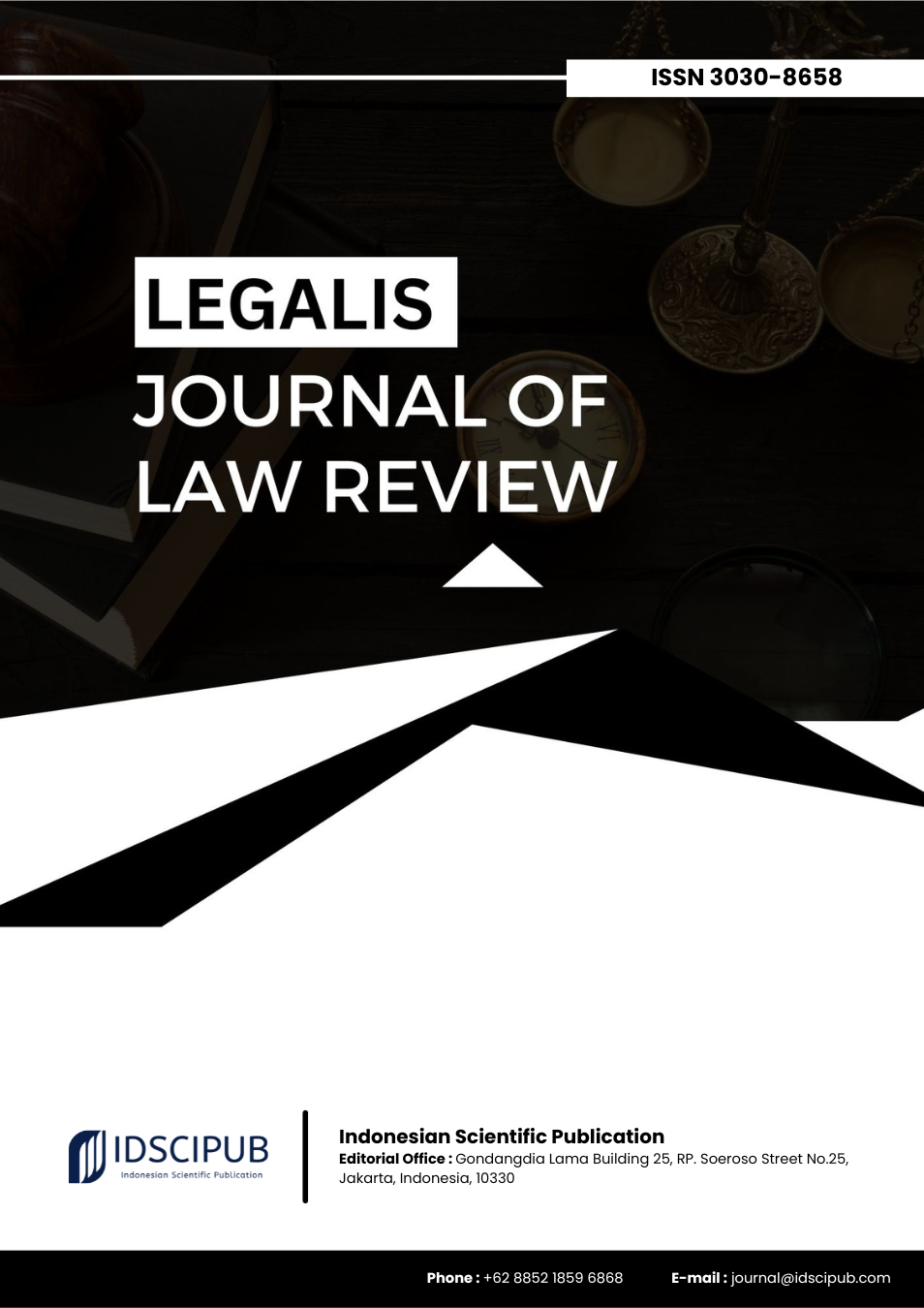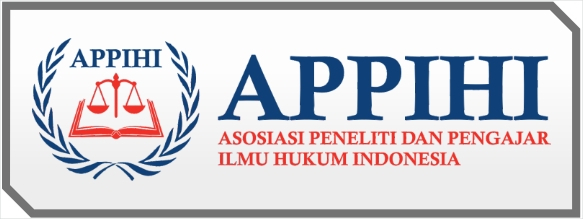International Humanitarian Law under Pressure: Legal Responses to 21st Century Armed Conflicts
DOI:
https://doi.org/10.61978/legalis.v2i1.805Keywords:
International Humanitarian Law, Armed Conflict, Autonomous Weapons, Urban Warfare, Non-State Actors, Gender Protection, Responsibility to ProtectAbstract
This narrative review explores the evolution of International Humanitarian Law (IHL) in the context of contemporary armed conflicts, focusing on five key areas: technological innovation, gender-based protection, humanitarian intervention, urban warfare, and non-state actors. The study begins by framing the urgency to reevaluate IHL as conflicts become increasingly complex due to technological advancement and hybrid threats. The literature was collected from databases such as Scopus and Google Scholar using specific keywords including "autonomous weapons," "urban warfare regulations," and "non-state actors in armed conflict." Peer-reviewed articles published from 2000 onwards formed the basis of the analysis. The results reveal multiple gaps between existing legal frameworks and the realities on the ground. Technological developments such as drones and AI challenge core principles of distinction and proportionality. Gender-focused instruments like CEDAW and UNSC Resolution 1325 have enhanced protections but suffer from inconsistent implementation. The Responsibility to Protect (R2P) doctrine introduces ethical and legal tensions regarding sovereignty, with mixed success in cases like Libya and Rwanda. Urban warfare and sieges demonstrate IHL's difficulty in regulating densely populated battlegrounds. Non-state actors complicate legal accountability due to their diverse structures and cross-border operations. The discussion emphasizes the role of systemic legal constraints and advocates for reforms that reflect current military practices. This review concludes that advancing legal adaptability, international cooperation, and contextualized policy interventions is vital to ensure effective civilian protection and uphold humanitarian norms in modern warfare.
References
Akia, B. (2023). The historical application of command responsibility as basis for prosecuting sexual violence crimes under international criminal law: the post-world war ii criminal tribunals to rome. Fundamina, 29(2), 1–32. https://doi.org/10.47348/fund/v29/i2a1 DOI: https://doi.org/10.47348/FUND/v29/i2a1
Ali, S., & Kabau, T. (2014). Non-state actors and the evolution of humanitarian norms. Journal of International Humanitarian Legal Studies, 5(1-2), 70–104. https://doi.org/10.1163/18781527-00501001 DOI: https://doi.org/10.1163/18781527-00501001
Averre, D., & Davies, L. (2015). Russia, humanitarian intervention and the responsibility to protect: the case of syria. International Affairs, 91(4), 813–834. https://doi.org/10.1111/1468-2346.12343 DOI: https://doi.org/10.1111/1468-2346.12343
Brunstetter, D., & Jimenez-Bacardi, A. (2015). Clashing over drones: the legal and normative gap between the united states and the human rights community. The International Journal of Human Rights, 19(2), 176–198. https://doi.org/10.1080/13642987.2014.991214 DOI: https://doi.org/10.1080/13642987.2014.991214
Cater, C., & Malone, D. (2016). The origins and evolution of responsibility to protect at the un. International Relations, 30(3), 278–297. https://doi.org/10.1177/0047117816659586 DOI: https://doi.org/10.1177/0047117816659586
Corn, G., & Kaleemullah, T. (2014). The military response to criminal violent extremist groups: aligning use of force presumptions with threat reality. Israel Law Review, 47(2), 253–283. https://doi.org/10.1017/s0021223714000053 DOI: https://doi.org/10.1017/S0021223714000053
Demirhan, N. (2023). Role of process legality in norm contestation: rise and fall of human protection. Alternatives Global Local Political, 48(3), 206–219. https://doi.org/10.1177/03043754231169418 DOI: https://doi.org/10.1177/03043754231169418
Hook, G., & Son, K. (2013). Transposition in japanese state identities: overseas troop dispatches and the emergence of a humanitarian power?. Australian Journal of International Affairs, 67(1), 35–54. https://doi.org/10.1080/10357718.2013.748274 DOI: https://doi.org/10.1080/10357718.2013.748274
Jaber, S., & Bantekas, I. (2023). The status of gaza as occupied territory under international law. International and Comparative Law Quarterly, 72(4), 1069–1088. https://doi.org/10.1017/s0020589323000349 DOI: https://doi.org/10.1017/S0020589323000349
Jastram, K., & Quintin, A. (2014). Prevention in practice: teaching ihl in us legal academia. International Review of the Red Cross, 96(895–896), 987–1027. https://doi.org/10.1017/s1816383115000259 DOI: https://doi.org/10.1017/S1816383115000259
Kozyrev, V. (2016). Harmonizing ‘responsibility to protect’: china’s vision of a post-sovereign world. International Relations, 30(3), 328–345. https://doi.org/10.1177/0047117816659589 DOI: https://doi.org/10.1177/0047117816659589
Liivoja, R. (2015). Technological change and the evolution of the law of war. International Review of the Red Cross, 97(900), 1157–1177. https://doi.org/10.1017/s1816383116000424 DOI: https://doi.org/10.1017/S1816383116000424
Lines, R., & Schabas, W. (2017). Drug control and human rights in international law. https://doi.org/10.1017/9781316759707 DOI: https://doi.org/10.1017/9781316759707
Mahnad, R. (2014). Beyond process: the material framework for detention and the particularities of non-international armed conflict. In International Law (pp. 33–51). https://doi.org/10.1007/978-94-6265-038-1_2 DOI: https://doi.org/10.1007/978-94-6265-038-1_2
Mantilla, G. (2017). The origins and evolution of the 1949 geneva conventions and the 1977 additional protocols. https://doi.org/10.1093/oso/9780199379774.003.0002 DOI: https://doi.org/10.1093/oso/9780199379774.003.0002
Oette, L. (2024). The transformation of the prohibition of torture in international law. https://doi.org/10.1093/9780191994098.001.0001 DOI: https://doi.org/10.1093/9780191994098.001.0001
Orzeszyna, K. (2023). The common core of the fundamental standards of international humanitarian law and international human rights law. International Community Law Review, 25(6), 561–572. https://doi.org/10.1163/18719732-bja10114 DOI: https://doi.org/10.1163/18719732-bja10114
Pappa, M. (2021). UNSCR 1325 and maritime security. Max Planck Yearbook of United Nations Law Online, 24(1), 137–169. https://doi.org/10.1163/18757413_02401006 DOI: https://doi.org/10.1163/18757413_02401006
Quataert, J. (2020). Changing modes of warfare and the gendering of military medical care, 1850s–1920s. In Oxford Handbook of Gender and Conflict. https://doi.org/10.1093/oxfordhb/9780199948710.013.17 DOI: https://doi.org/10.1093/oxfordhb/9780199948710.013.17
Reina, J., Pulido, Ó., & Guzmán, H. (2023). Desafíos del derecho internacional humanitario en conflictos de guerra híbrida. Jurídicas Cuc, 19(1). https://doi.org/10.17981/juridcuc.19.1.2023.22 DOI: https://doi.org/10.17981/juridcuc.19.1.2023.22
Rodríguez, J. (2021). El marco jurídico internacional de los niños soldado. evolución y nuevos debates tras el caso ongwen ante la corte penal internacional. Ius Et Veritas, (63), 107–120. https://doi.org/10.18800/iusetveritas.202102.005 DOI: https://doi.org/10.18800/iusetveritas.202102.005
Schmitt, M. (2022). International humanitarian law and the conduct of cyber hostilities: quo vadis?. Journal of International Humanitarian Legal Studies, 13(2), 189–221. https://doi.org/10.1163/18781527-bja10059 DOI: https://doi.org/10.1163/18781527-bja10059
Singh, A., & Yadav, A. (2023). Security of food, civilians and combatants under human rights laws in times of war. Journal of Law and Sustainable Development, 11(5), e1180. https://doi.org/10.55908/sdgs.v11i5.1180 DOI: https://doi.org/10.55908/sdgs.v11i5.1180
Sossai, M. (2022). The place of cities in the evolution of international humanitarian law. The Italian Yearbook of International Law Online, 31(1), 227–252. https://doi.org/10.1163/22116133-03101012 DOI: https://doi.org/10.1163/22116133-03101012
Vigevano, M. (2021). Inteligencia artificial aplicable a los conflictos armados: límites jurídicos y éticos. Arbor, 197(800), a600. https://doi.org/10.3989/arbor.2021.800002 DOI: https://doi.org/10.3989/arbor.2021.800002







